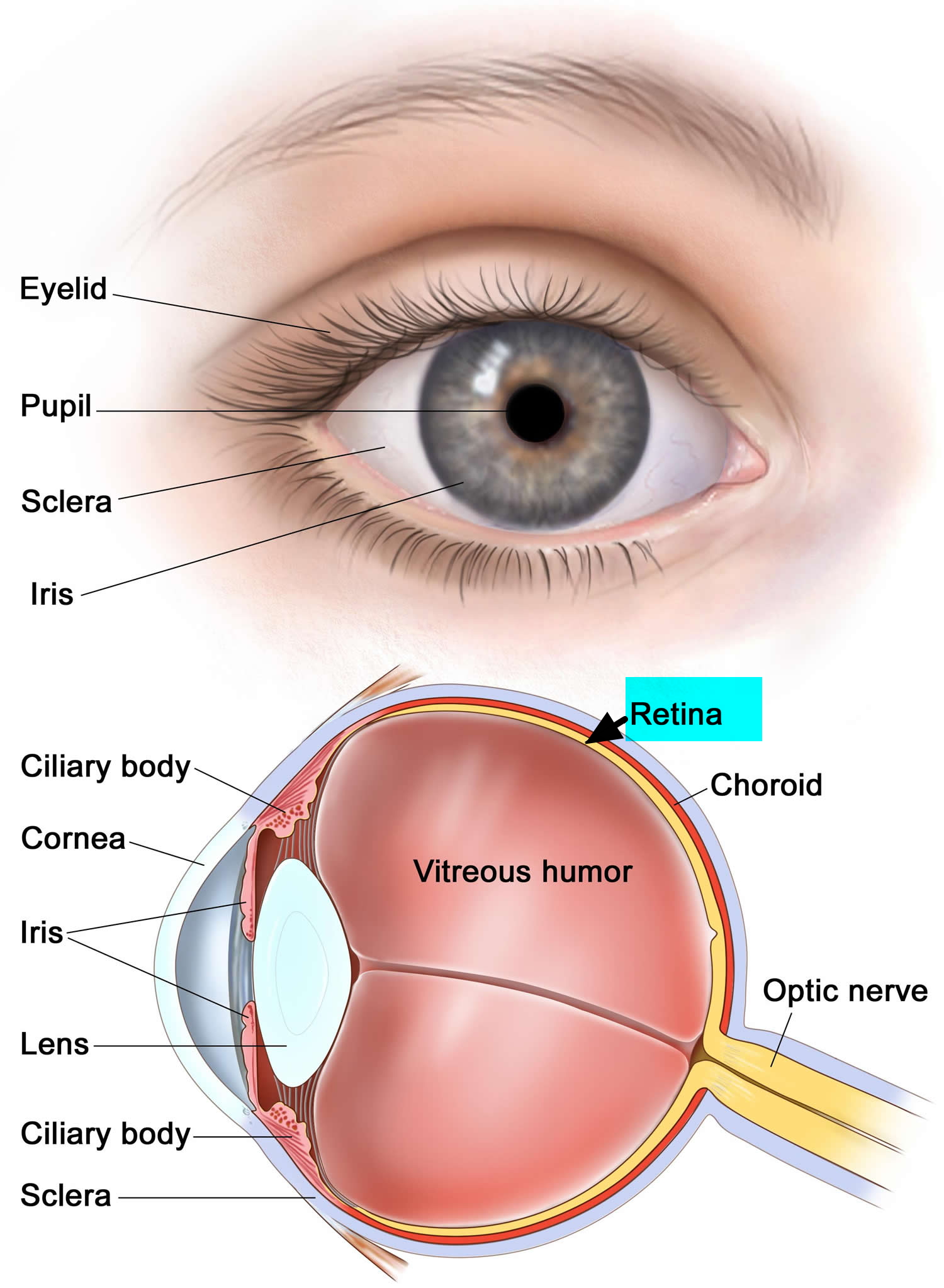

The functional organization of vertebrate retinal circuits for vision. Spikes and ribbon synapses in early vision.
#FUNCTION OF RETINA IN HUMAN EYE CODE#
An amplitude code transmits information at a visual synapse. James, B., Darnet, L., Moya-Díaz, J., Seibel, S.-H. Inhibition decorrelates visual feature representations in the inner retina. A mammalian retinal bipolar cell uses both graded changes in membrane voltage and all-or-nothing Na + spikes to encode light. NaV1.1 channels in axon initial segments of bipolar cells augment input to magnocellular visual pathways in the primate retina. Puthussery, T., Venkataramani, S., Gayet-Primo, J., Smith, R. Spikes in mammalian bipolar cells support temporal layering of the inner retina. Spikes in retinal bipolar cells phase-lock to visual stimuli with millisecond precision. Light evokes Ca 2+ spikes in the axon terminal of a retinal bipolar cell. Discharge patterns and functional organization of mammalian retina. Retinal ganglion cell maps in the brain: implications for visual processing. The types of retinal ganglion cells: current status and implications for neuronal classification. Inhibitory interneurons in the retina: types, circuitry, and function.

Timing and computation in inner retinal circuitry. General features of inhibition in the inner retina. Retinal bipolar cells: elementary building blocks of vision. Lateral interactions in the outer retina. How do horizontal cells ‘talk’ to cone photoreceptors? Different levels of complexity at the cone-horizontal cell synapse. Parallel processing in the mammalian retina. Some informational aspects of visual perception. Inference of nonlinear spatial subunits by spike-triggered clustering in primate retina. Testing pseudo-linear models of responses to natural scenes in primate retina. Spherical arena reveals optokinetic response tuning to stimulus location, size and frequency across entire visual field of larval zebrafish. Neural circuits in the mouse retina support color vision in the upper visual field.

Cellular and molecular mechanisms of photoreceptor tuning for prey capture in larval zebrafish. A retinal code for motion along the gravitational and body axes. Inhomogeneous encoding of the visual field in the mouse retina. A study on mice showing that several types of RGCs exhibit distinct properties depending on their position on the retina. Visual space is represented by nonmatching topographies of distinct mouse retinal ganglion cell types. A tale of two retinal domains: near-optimal sampling of achromatic contrasts in natural scenes through asymmetric photoreceptor distribution. Activity correlations between direction-selective retinal ganglion cells synergistically enhance motion decoding from complex visual scenes. Synaptic rectification controls nonlinear spatial integration of natural visual inputs. A study on larval zebarfish showing how the function of inner retinal circuits varies considerably across the eye to meet natural demands. Zebrafish differentially process color across visual space to match natural scenes. The Mueller cells also play a supportive role by maintaining the structural and functional stability of all the other retinal cells.Land, M. The bipolar, horizontal, amacrine and ganglion cells help transmit the electrical signals converted by the photoreceptors. These cells play a supportive role to the photoreceptors by providing nutrients and removing toxic waste material generated by them. Retinal pigment epithelium (RPE)īelow the photoreceptors, there is a specialised thin layer of cells called the retinal pigment epithelium (RPE).
/GettyImages-172368516-2187060f66794ad3905f5f06e3e7f5e7.jpg)
Most inherited retinal conditions are due to progressive degeneration of the photoreceptors as a result of mutations in any one of more than 300 genes, which eventually lead to sight loss. The number of cone cells in human is less compared to rods and they are mainly situated in the fovea. Cone cells are responsible for our central vision, along with helping us to see colour and objects in detail under bright light. Rods are the most abundant photoreceptor cell in the retina, responsible for vision in dim light and peripheral vision. They are differentiated into two types, rods and cones. The photoreceptors are the main cells that help us generate vision. The other cell types above the photoreceptors relay electrical signals to the brain Photoreceptors Microscopic view of the cells in the retina: The rod and cone photoreceptors are at the bottom supported by the retinal pigment epithelium.


 0 kommentar(er)
0 kommentar(er)
